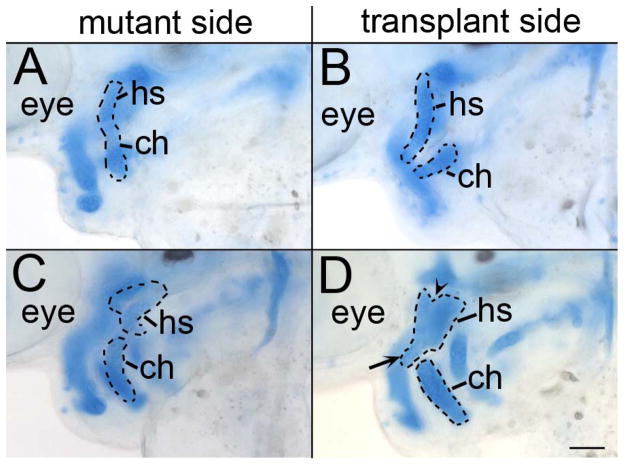Fig. 7.
Morphology of the pharyngeal skeleton is still disrupted in smo mutants receiving wild-type neural crest transplants. (A & C) Mutant and (B & D) transplant side of 4 dpf Alcian Blue/Alizarin Red stained smo mutants receiving wild-type neural crest transplants. The dashed lines outline the second pharyngeal arch elements for each respective side. (A & B) Compared to the mutant side, the side of the embryo populated with wild-type neural crest cells generates larger pharyngeal skeleton elements. (C & D) Even in the most complete rescue, the skeletal elements generated by wild-type neural crest cells are still misshaped. The overall shape of the hyosymplectic (hs) is recognizable. However, the symplectic rod is nearly absent (arrow) and there is a notch out of the proximal most portion of the element (arrowhead). ch, ceratohyal. Anterior is to the left; dorsal is up in all images. Scale bar=50μm.

